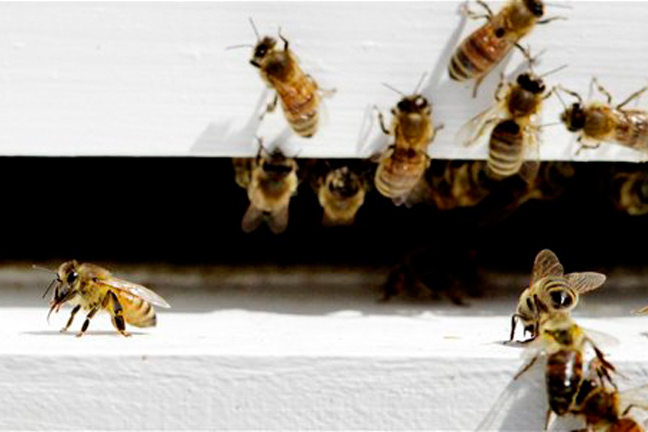
Agricultural News
USDA Provides $8 Million to Help Boost Declining Honey Bee Population
Fri, 20 Jun 2014 15:41:51 CDT

The U.S. Department of Agriculture (USDA), today announced $8 million in Conservation Reserve Program (CRP) incentives for Michigan, Minnesota, North Dakota, South Dakota and Wisconsin farmers and ranchers who establish new habitats for declining honey bee populations. More than half of the commercially managed honey bees are in these five states during the summer. Today's announcement comes in addition to $3 million USDA designated to the Midwest states to support bee populations earlier this year through the Natural Resources Conservation Service Environmental Quality Incentives Program.
"American agricultural production relies on having a healthy honey bee population," said Agriculture Secretary Tom Vilsack. "In recent years, factors such as diseases, parasites, pesticides or habitat loss have contributed to a significant decline in the honey bee population. This $8 million is part of the Administration's ongoing strategy to reverse these trends and establish more plant habitat on Conservation Reserve Program lands to restore the bee population."
The new CRP pollinator initiative is designed to further enhance current CRP land, allowing it to provide better access to nutritious pollinator forage. The program allows for managing or replacing existing vegetation, known as 'covers', with lower cost, high nutrition seed mixes that can support distinct blooming cycles of plants that benefit pollinators. Honey bees, the pollinator workhorse of U.S. fruit and vegetable agriculture, will have more blooms from which to collect nectar and pollen to sustain and promote colony growth and honey production throughout the growing season. By assisting honey bees, the pollinator initiative helps USDA continue to secure the food supply. More than $15 billion worth of agricultural production, including over 130 fruits and vegetables, depend on the health and well-being of honey bees.
Now is a critical time for efforts to support honey bee populations. The honey bee population in the United States has been declining for decades. The number of managed U.S. honey bee colonies dropped from 6 million in 1947, to just 2.5 million today.
This week, President Obama issued a memorandum directing U.S. government agencies to take additional steps to protect and restore domestic populations of pollinators, including honey bees. Agriculture Secretary Tom Vilsack and Environmental Protection Agency (EPA) Administrator Gina McCarthy will co-chair a new Pollinator Health Task Force to focus federal efforts to conduct research and take action to help pollinators recover from population losses. This includes a public education campaign to teach people ways that they can help pollinators in their own homes or businesses.
USDA is already actively pursuing solutions to the multiple problems affecting honey bee health. The Agricultural Research Service (ARS) maintains four laboratories across the country conducting research into all aspects of bee genetics, breeding, biology and physiology, with special focus on bee nutrition, control of pathogens and parasites, the effects of pesticide exposure and the interactions between each of these factors. The National Institute of Food and Agriculture (NIFA) supports bee research efforts through grants and research to Land Grant Universities. The Animal Plant Health Inspection Service (APHIS) conducts national honey bee pest and disease surveys and provides border inspections to prevent new invasive bee pests from entering the U.S. The Farm Service Agency (FSA) and NRCS work on improved forage and habitat for bees through programs such as the Conservation Reserve Program (CRP) and EQIP. Additionally, the Economic Research Service (ERS) is currently examining the direct economic costs of the pollinator problem and the associated indirect economic impacts, and the National Agricultural Statistics Service (NASS) conducts limited surveys of honey production, number of colonies, price, and value of production which provide some data essential for research by the other agencies.
The CRP pollinator initiative, administered by the USDA Farm Service Agency (FSA), takes advantage of the new pollinator seed mixes developed by the USDA Natural Resources Conservation Service. FSA also recently announced the restart of continuous enrollments in CRP, including its Pollinator Habitat Initiative to enroll 100,000 acres of longer lasting meadows of high-quality native wildflowers that support honey bees, pollinators and other wildlife populations.
For more information about new the pollinator initiative in the five Midwestern states, the continuous enrollment in the Conservation Reserve Program, and the pollinator habitat initiative, agricultural producers are encouraged to contact their local FSA office or go online at www.fsa.usda.gov.
WebReadyTM Powered by WireReady® NSI
Top Agricultural News
More Headlines...




















